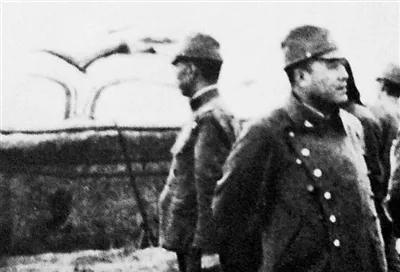The Japanese army regarded the defeat of Baotou as a great shame, and in the face of the casualty statistics that the Mongolian army had never had, Okabe was even more furious, and he was like a badly wounded beast, issuing a hysterical roar: "We must sweep away the River Loop and eliminate all the Fu Zuo rebels." On the other hand, the combat effectiveness of the Sui army in the Battle of Baotou also shocked Okabe, and deeply felt that the existence of the Sui army was a huge threat and hidden danger to the Mongolian army.
After punishing Kojima and several other senior officers, Okabe decided to concentrate the main force of the Mongolian army and destroy the Hetao base of the Sui army in one fell swoop in the name of "punishing Fu Zuoyi" in one fell swoop. To this end, he formulated and submitted to the higher command the "Operation Eight" plan.

As soon as the plan was approved, Okabe personally went to Guisui and Baotou to deploy the military operation to attack Suixi. When he summoned Kuroda Shigetoku, commander of the Twenty-sixth Division, and Nagakoshima, a cavalry group, in Baotou, he warned the two men to guard against the previous "gust of wind-like combat", stressing that the main purpose of this operation was not to occupy land, but to encircle and annihilate the Sui army.
On January 28, 1940, more than 30,000 Japanese puppet troops mobilized from Cha-nan, Jinbei, and Guisui were divided into three routes, under the unified command of Kuroda Shigetoku, and took more than a thousand unshaped trucks to march toward Hetao.
The corresponding information had already flown to Fu Zuoyi's desk. After studying and judging these intelligences, Fu Zuoyi held that although the Japanese army had a large number of troops, they were temporarily drawn from various places, so the current advance could not be "the work of the emperor's family, slowly rubbing", but could only actively seek the main force of the Sui army in order to seek a quick battle and a quick decision.
The Japanese puppet army, which marched in tandem with three roads, was the weakest of the puppet Mongol cavalry on the right wing, the strongest in the kuroda army on the middle road, and the kojima army on the left wing. The battle strategy formulated by Fu Zuoyi was to first block the Kuroda and Kojima troops, wait for the Sui army ambush troops to be ready, and then take advantage of the dusk to retreat, lure the Kuroda department into the existing bag-shaped ambush circle, and finally concentrate the main force of the Sui army to carry out a fierce attack. According to his prediction, if all goes well, it is entirely expected that Kuroda will be annihilated in the movement, and with Kurodabu annihilated, the rest of the Japanese puppet army will naturally not retreat.
In the specific deployment, the task of blocking Kuroda's troops was given to the Thirty-fifth Division of the Eighty-first Army. The Eighty-first Army was Ma Hongbin's unit, also known as the Ma Family Army, and the Thirty-fifth Division was its main force, which had always been under the personal command of the commander Ma Hongbin. When the Suixi Campaign broke out, Ma Hongbin was attending a military conference presided over by Chiang Kai-shek in Chongqing, and the troops were commanded by Ma Tengjiao, commander of the Thirty-fifth Division.
On February 1, the 26th Division successively gathered troops at the front of the Wubulangkou and Siyitang positions where the Majia Army was stationed. There were soldiers counting on the positions, and from morning to noon, there were more than 780 vehicles of various types driven by the Japanese army alone, which showed the number of troops invested.
In the Suixi Campaign (1) series, to be continued...